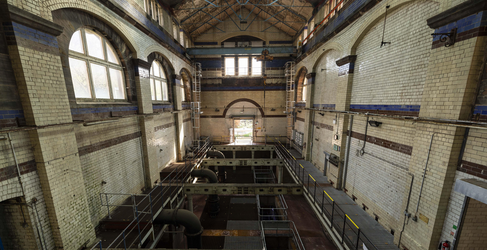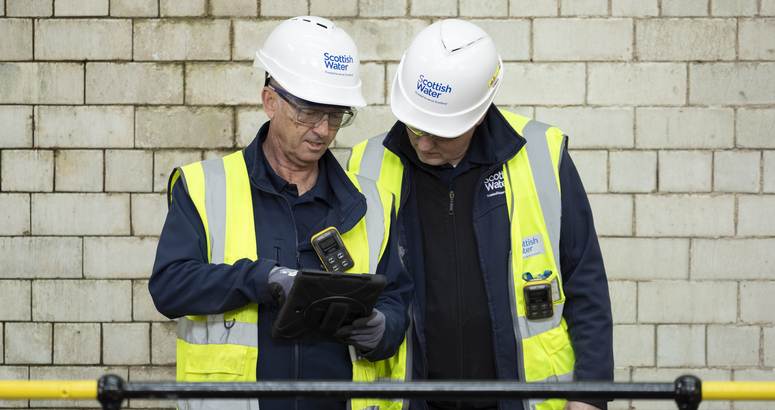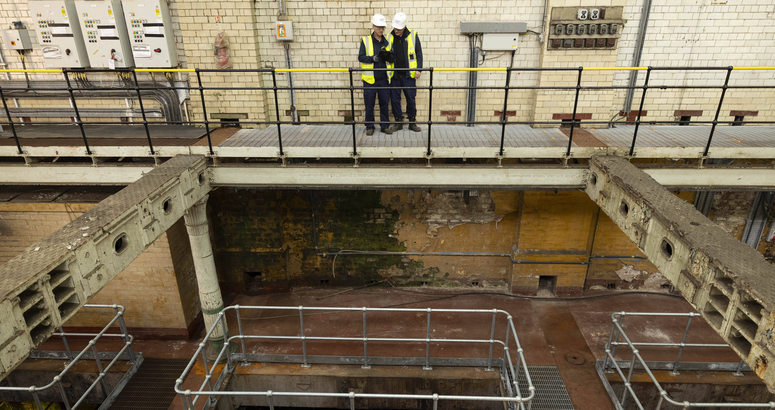Hi-Tech Transformation for Glasgow Victorian Waste Water Pumping Station
02 May 2024WATCH: From Steam Driven to Data Driven
Partick Pumping Station is now connected to a cloud-based digital app providing alerts and data-driven insights into its operation. Watch this short video to find out how it works.
One of the most important waste water facilities in Scotland has undergone a technological transformation 120 years after it was built at the end of the Victorian era.
Partick Pumping Station in Glasgow - a key part of the city’s waste water infrastructure which still serves 170,000 people – is one of more than 30 pumping stations Scottish Water is upgrading by connecting to a cloud-based digital app that provides alerts and data-driven insights.
The investment at Partick, which was recently completed, is enabling the publicly owned utility to improve the operability, efficiency and reliability of the pumping station, reduce energy consumption and help the company reach its Net Zero targets while continuing to protect the local environment, including the rivers Kelvin and Clyde.
The pumping station is a key part of the waste water infrastructure in Greater Glasgow because two major sewers come into it and it lifts flows from those sewers to a gravity sewer which takes waste water to Dalmuir Waste Water Treatment Works (WWTW) in Clydebank for treatment.
The installation of the state-of-the-art ’smart hardware’ at Partick, which will help view and manage pumping performance better, is in sharp contrast to how the pumping station was operated when it opened in 1904 with the use of old steam-driven pumps.
When opened by the Glasgow Corporation, the ornate B listed Renaissance red sandstone building in Dumbarton Road used three powerful steam-driven pumps.
These lifted sewage from the lower levels and propelled it through the city’s sewer system. Boilers generated the steam needed to power the pumps and, in addition to all the machinery that was required, the station housed a set of stables for horses, which were used to help with moving coal to heat water and create the steam for the pumps.
As technology advanced, the steam pumps were replaced in the 1960s by electric pumps and, in 2012, Scottish Water completed a major £2.3m upgrade of the pumping station to help protect the local environment and improve its efficiency.
Now Scottish Water has ambitions to improve its asset management strategy, reduce its energy consumption and reach its Net Zero targets by 2040 and, following the success of similar work at WWTWs, they are applying a similar solution to sewage pumping stations to help deliver these improvements.
A new year-long £2m initiative covering the 32 largest waste water pumping stations is progressing to connect the facilities, and their asset and equipment data, to the Xylem Avensor cloud portal. The new technology aims to improve instant, live streaming visibility of what’s happening on-site 24/7.
It will enable:
• Improving service as operators have much better visibility of how the station is performing.
• Quicker response for teams when situations do arise.
• Proactive responses, helping to reduce the risk of pumps breakdown and Environmental Pollution Incidents, making energy savings and reducing on our carbon footprint and net zero emissions.
• Monitoring of energy consumption helping Operations to keep their pumps running efficiently.

Partick Pumping Station serves 170,000 people

Pumping performance can be closely monitored and managed
Nathan Wield, Scottish Water’s wastewater operations manager, said: “We have installed this smart hardware at Partick Pumping Station to be able to view and manage pumping performance better, which is a long way from the old steam driven pumps that were originally installed in the station at the start of the 20th century.
"It’s 120 years old this year and this latest investment will be hugely important because it’ll enable us to monitor and better understand how one of our largest, critical assets is performing. Being able to see pump performance, energy usage, weather information and well levels, gives us confidence in managing our assets, and means we’re able to respond to emerging risks more quickly.
“Being able to do this 24-7 and remotely, by connecting this data to the cloud, means we have full visibility of the pumps performance data, which enables us to make better investment decisions and spend customers’ money more cost-effectively so we really do win on all fronts.
“Using this new technology at Partick means we are able to react to alerts on pump performance proactively, mitigating the risk of failures and, in turn, reducing the risk of a pollution spill, so the investment there is very significant.”
Scottish Water is committed to transforming the way it operates and invests and its Routemap to Net Zero sets out a journey to net zero emissions by 2040. The company’s aim is to reduce the amount of energy it consumes to deliver its vital water and wastewater services.

The pumping station was opened 120 years ago

The building originally used three powerful steam pumps
Partick Pumping Station
Some pictures of Partick Pumping Station
















